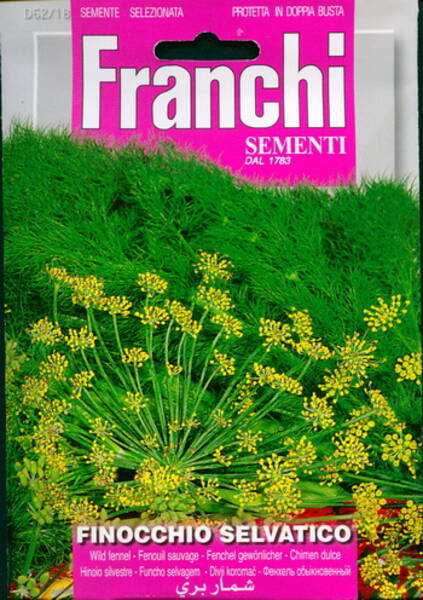A herbaceous plant is similar to a dill. Stem height up to 100-120 cm.
For open ground. Leaves with an anise aroma and sweetish-spicy taste are used for food.
Usage: spicy, aromatic and medicinal. Leaves fresh and dried as a spice for meat, fish and vegetable dishes.
Fennel goes especially well with legumes. Fennel fruits are used for medicinal purposes.
1,0 g = 200-300 seeds.
.jpg)
Garden fennel. Bot. syn.: Foeniculum capillaceum Gilib., Foeniculum officinale All.
* Common fennel is also called “pharmacy dill” due to the external similarity of this spicy plant to dill.
It is from fennel seeds that the so-called “dill water” is made, a mild action with a pleasant taste and anise aroma,
which is prescribed to babies to normalize digestion and eliminate intestinal colic.
However, not only fennel seeds, but this entire beautiful plant, 1-2 m high, is a supplier of useful substances and vitamins.
Juicy young fennel greens with a specific sweetish taste and anise smell can be added to the same dishes as dill.
Fresh and boiled petioles, fresh and stewed heads of cabbage, boiled fennel roots are also added to first and second courses, and to salads.
Fennel inflorescences are used for canning vegetables.
The fruits are used to flavor sweets and sauces, as well as vegetable, meat and fish dishes.
Fennel fruits are also used in baking, perfumery and medicine.
In ancient times, the people of many countries believed in its miraculous power - as if fennel could heal the body from all ailments.
Fennel fruits have antispasmodic, expectorant, carminative, mild diuretic and laxative properties,
carminative and other beneficial effects on the body, including stimulating milk production in nursing mothers.
Fennel repels fleas. This property of the plant has been used since ancient times to protect pets from annoying insects.
Finely chopped fresh fennel leaves are rubbed into the pet's fur and placed around and under the bedding.












